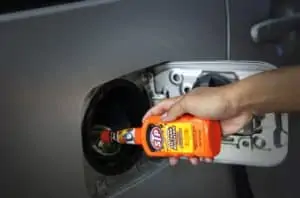Owning a fancy car is not always about enjoying the luxury of driving smoothly, it can also bring the stress of maintenance if things go wrong without any prior knowledge.
There are some vehicle errors that occur without showing any specific symptom, rather it leaves you standstill in the middle of nowhere.
One of the most confusing and irritating problems with your car you might face is when you see your check engine light on but no codes found.
If you have ever been into such an awkward situation, then you know how frustrating it is!
Most of the time, the OBC2 scanner can’t find a troube code because either the hardware or software is outdated or don’t support the car model. Disabled ECM is a rare scenario.
In this article, we will be talking about the probable reasons and solutions for this popping up light with no codes problem.
Contents
What Do Trouble Codes Mean and Indicate To?
Before you jump to any conclusion, first of all, you need to know what those trouble codes mean and indicate to.
Usually, they come in for different reasons.
With the establishment of OBDII for the first time, they came up with some generic set of codes such as powertrain ‘P’ to reflect some usual terms for all car manufacturers.
Basically, powertrain ‘P’ indicates a 5 digit code that starts from P0001 and ends with P0799.
But the problem is, car manufacturers soon realized, there must be other enhanced codes based on the manufacturer’s need to give a specific indication of problems.
Not only manufacturer based, but also they wanted to establish model-specific codes as well.
So, with this intention car makers applied to the concerned authority for the establishment of enhanced trouble codes for powertrain ones which would start from P0001 and continue up to P3000.
Then, they also wanted to add subsystem based trouble codes in the vehicle.
Thus, they introduced ‘B’ for the body, ‘C’ for Chassis, ‘U’ for digital communications to give you a clear indication of the probable vehicle problem.
Check Whether the Light is Blinking or Steady
First, you need to check if the light is steady or blinking fast.
If the second thing is happening, then there might be an emergency, as according to most reports from consumers.
In that case, you better turn your car off, pull over, and look for professional assistance.
If things are steady, then most probably there is no emergency situation but the problem needs to be understood well before applying a specific solution.
Probable Reasons Behind No Codes Found Problem
When you discover your check light on without any codes, then there are several reasons that might be responsible for making things happen this way.
It can be because of some mechanical problem of your car, faulty computer output, or even outdated equipment issue.
#1. Cheap ODB reader or Scanner Failure
The check engine light doesn’t pop up suddenly until and unless your vehicle is emitting more emissions than EPA standard.
There might be something wrong with your engine in the background, but you won’t be able to read the specific problem if you have an ODB reader or scanner that is only designed to read generic codes.
So, if you discover your engine light on and no codes are found, then most probably it’s the problem of your cheap scanner and ODB reader that is unable to read enhanced codes.
There are very few code readers available in the market that can read enhanced codes for specific problems with such sophistication.
Either your ODB reader model is an old one, or maybe it was developed in some other country.
It can also happen if somehow your car model’s number doesn’t support that scanner’s built-in system.
In such a scenario, you are left with 2 options only.
Either you buy an ODBII reader that is able to read enhanced codes such as B, C, and U ones, or pay a car maintenance shop to read that for you for further solution.
#2. Disabled ECM Problem
Another background reason might be your disabled ECM that can be caused in many ways.
If it’s a newly bought one, then make sure if your car has passed the DMV emission test.
Or, if you are using it for a while, try to remember your last car maintenance and check the emissions report closely.
When you check the reports, then you might discover some suggestions for upcoming car maintenance or indication of any background serious problem that is going to bother you in a while.
Sometimes, dishonest car sellers disable the EMC of your car just to get away with the fear of emission tests.
So, whatever the reason is, replacing the ODB reader with the enhanced code readability might help you to find out the exact problem.
And, if your ECM is disabled, then going to a mechanical shop would be a more preferable action, as you need to reset your ECM system.
Solving the Check Engine Light On
#1. Faulty Oxygen Sensor
Once you are done replacing the scanner to read enhanced codes, now there comes the point of finding probable background malfunctions of your car when you see the engine light on.
One of the mechanical malfunctions that can cause check engine light on without showing any codes is the faulty oxygen sensor of your car.
The primary task of your car’s oxygen sensor is to monitor the unused oxygen or to check the amount of burned fuel.
If somehow your oxygen sensor has some defect, then it will not be able to provide accurate data to your car’s computer system and the gas mileage will be decreased too.
In most cases, cars have a minimum of 2 to a maximum of 4 oxygen sensors. Once you get the code from your scanner, it will be easier to know which sensor needs to be replaced.
Now, you might be thinking about what actually makes an oxygen sensor faulty. Well, the sensor goes into the mixture of oil ash over time and it loses its ability to burn fuel and oxygen mixture to burn the right amount.
So, in this way emissions get increased by reducing the gas mileage on the other hand.
To solve this issue, you must replace your faulty oxygen sensor that costs just around $200.
If you don’t take it seriously, then things can come down to a situation where your catalytic converter is busted and that can cause you to spend around $2000.
So, why would you take such a risk?
It’s easy to replace the faulty oxygen sensor following an instruction manual by yourself. You can also take it to a mechanical shop if you want a professional finish.
#2. Faulty Gas Cap Problem
A gas cap is not something most car users even think of having an issue with. But having a loose or faulty gas cap can also turn the check engine light on.
After fixing your code reader, if it suggests that something is wrong with your gas cap, then it indicates the leaking of gas vapors.
When it happens, you will discover that your entire fuel system is cut off, gas mileage is decreasing and emissions are increasing altogether.
If your car is not behaving awkwardly when the engine light pops up, then try to check the gas cap first. Either you will find it cracked or loosen.
If it’s loosened, then tighten it after pulling over and continue driving to observe whether the light gets turned off or not.
But, if you find it cracked, then it’s better to replace your old gas cap with a new one from any mechanical store.
When you don’t take things like this seriously, then it makes you suffer in the long run.
#3. Catalytic Converter Needs to be Replaced
The catalytic converter of your car basically does the job of reducing amortize fuel gases.
In this process, it helps to convert harmful chemicals such as carbon monoxide into harmless materials. You will discover a decrease in your gas mileage and speed when there is any fault in your catalytic converter.
This failure of your catalytic converter can be caused by a damaged oxygen sensor and disintegrated plugs of spark.
So, if you find your check engine light on, then one of the most probable reasons could be the failure of your catalytic converter.
To solve this issue, you need to see a professional mechanic shop where they will replace and fix your catalytic converter with a new one.
But, it might cost you a lot, since this component is not as cheap as the other ones mentioned earlier.
#4. Faulty Mass Airflow Sensor
Sometimes, you will see your check engine light but none of the above reasons will be responsible for that. In that case, the problem might be occurring due to your car’s mass airflow sensor.
The primary job of this sensor is to give enough information to the computer of your car to add enough necessary fuel in terms of air pressure that your engine is getting exposed to.
If somehow there is any fault in your airflow sensor, then it’s definitely going to increase emissions and decrease the mileage caused by gas.
It can happen due to improper installation of your mass wind flow sensor or if it’s old enough to be replaced.
Though you will be able to run your car for more than a few weeks with a faulty MAF, it will start halting pretty often as there will be a significant level of decrease in your gas mileage over time.
To solve this issue, you need to replace your mass airflow sensor which will eventually cost around 200-300$.
The process is not that hard, you can do it on your own once you know the instructions well.
But, if you don’t want to take any risk and in a hurry, then it’s more preferable to get this job done as a professional mechanic.
#5. Spark Plugs Failure
The combustion chamber of your car’s engine basically gets sealed by spark plugs.
It creates a space for spunk to leap across and thus your engine’s combustion gets initiated.
If you happen to see your check engine light on, then one of the least probable reasons could be the failure of your spark plugs.
When this happens, you will discover the misfire of your plugs and there will be little thrust as well if you try to accelerate your car.
Basically, spark plugs can give you smooth service up to 100k miles. But, things can go wrong and you may discover your spark plugs are damaged pretty earlier than you have ever expected.
So, if you want to run your car smoothly, then you must replace your faulty spark plugs and get a new one with new wires.
It’s not that costly to be worried about, rather it’s cheap and the process is simple to be done easily.
You can find them in any auto parts shop and they can replace your plugs within a short amount of time.
#6. Transmission Problems
Sometimes, the problem is with the transmission system of your car. It basically invokes the power of your engine and it reaches the wheels.
These two works so closely that if one is having a problem, the other will be behaving unevenly.
So, if there is any problem with your transmission system, then there will be an increase in your engine’s emissions.
This will lead your control module to detect some unusual stuff happening in the background and your check engine light will be turned on.
If you have replaced your ODB reader successfully, then it will be able to scan and read the problem and will show you the exact codes related to your transmission problem.
Transmission problems are something you won’t be able to fix on your own, so it’s better to see a professional who can solve this issue.
Final Words
Your car is your favorite buddy as a form of quick commute when you want to go anywhere you want.
So, just like a human friend, you need to take good care of this machine friend.
But, sometimes things go unusual like when you see your check engine light on but no codes found. You go blank all of a sudden.
To solve this issue, follow the instructions mentioned in our article and have a long-lasting company with your transformer!




